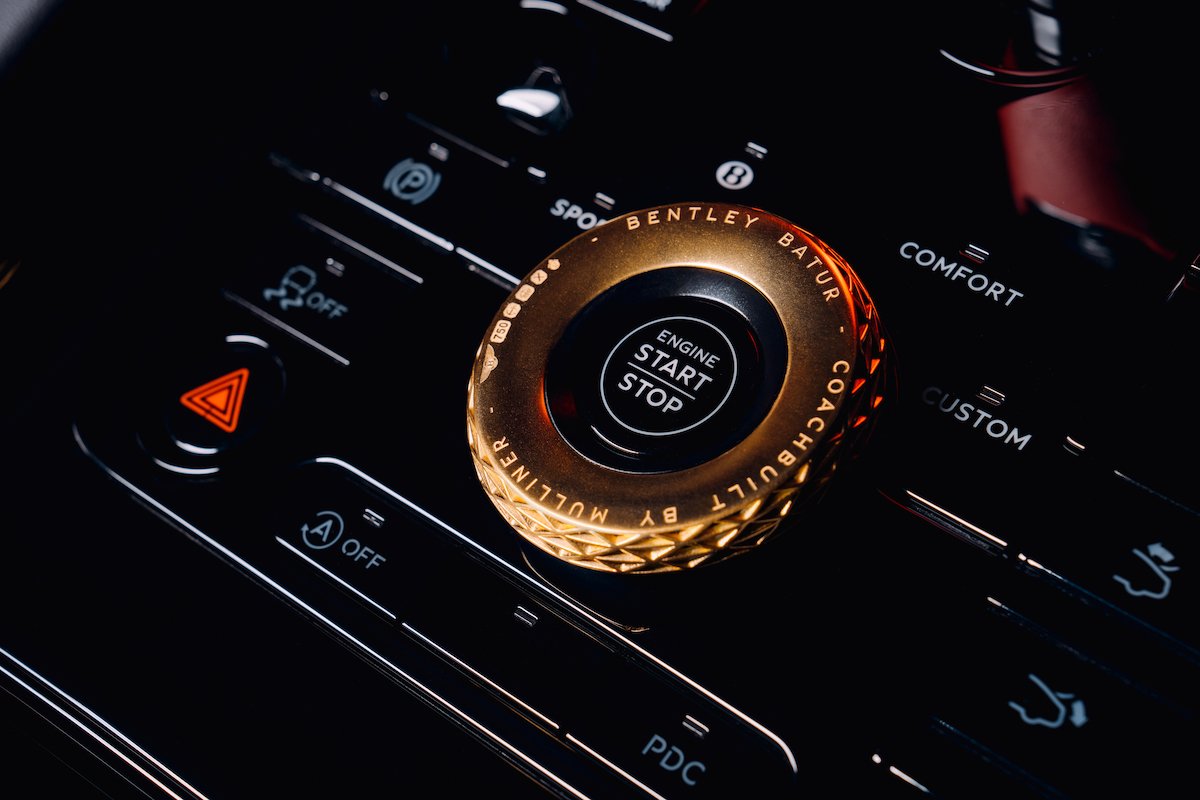
Bentley Motors is 3D printing solid gold components for its Mulliner Batur.
The 18ct yellow gold parts, including a number of touch points across the dashboard, controls and steering wheel, will feature on just 18 exclusive examples of the car, which has been described as the fastest Bentley to date. All 18 vehicles have already sold to customers for 1.65 million GBP (excluding taxes and options).
The parts are being manufactured with Cooksongold, a Birmingham-based supplier to the jewellery industry, which also specialises in the additive manufacturing of precious metals, having worked closely with EOS, and on a number of luxury jewellery projects including the TCT Award-winning Embrace collection from Boltenstern.
The optional components include the Charisma Dial cabin centrepiece which encircles the vehicles start/stop button, the Organ Stop vent controls on the dashboard, and a gold insert marker on the steering wheel.
The parts are being produced with Direct Metal Laser Sintering using sustainably sourced gold recycled from old jewellery pieces in line with Bentley’s Beyond100 strategy, which aims to reach end-to-end carbon neutral targets by 2030. Each 3D printed part will be finished by hand using traditional jewellery techniques and hallmarked in Birmingham’s Jewellery Quarter as a sign of solid material authenticity. Additionally, any parts manufactured this year will also receive the Jubilee hallmark to commemorate the late Queen Elizabeth II’s Platinum Jubilee year.

Dr. Matthias Rabe, Member of the Board for Research and Development at Bentley Motors, said: “Bentley’s approach to additive manufacturing is industry leading, evident through our pioneering use of a luxury metal in the design and development process of the Batur. One of the key benefits is that it is efficiency led, cutting down on the cost and complexity of a myriad of jobs but maintaining the value of a rare resource.”
“As Bentley embraces an exciting future, we see huge potential in advanced, innovative technologies. Processes such as 3D printed gold will be a springboard that allows our customers an even greater ability to personalise, further enhancing the individualisation programme offered on every car.”
While these gold 3D printed components are thought to be an industry-first, the UK-based luxury automotive company has been a long-time user of additive manufacturing and earlier this year doubled its 3D printing capacity with a 3 million GBP investment at its Crewe headquarters. In a press release, the automaker teased that the investment will enable further AM applications in bespoke and low volume components, including additional gold applications in new generation models.